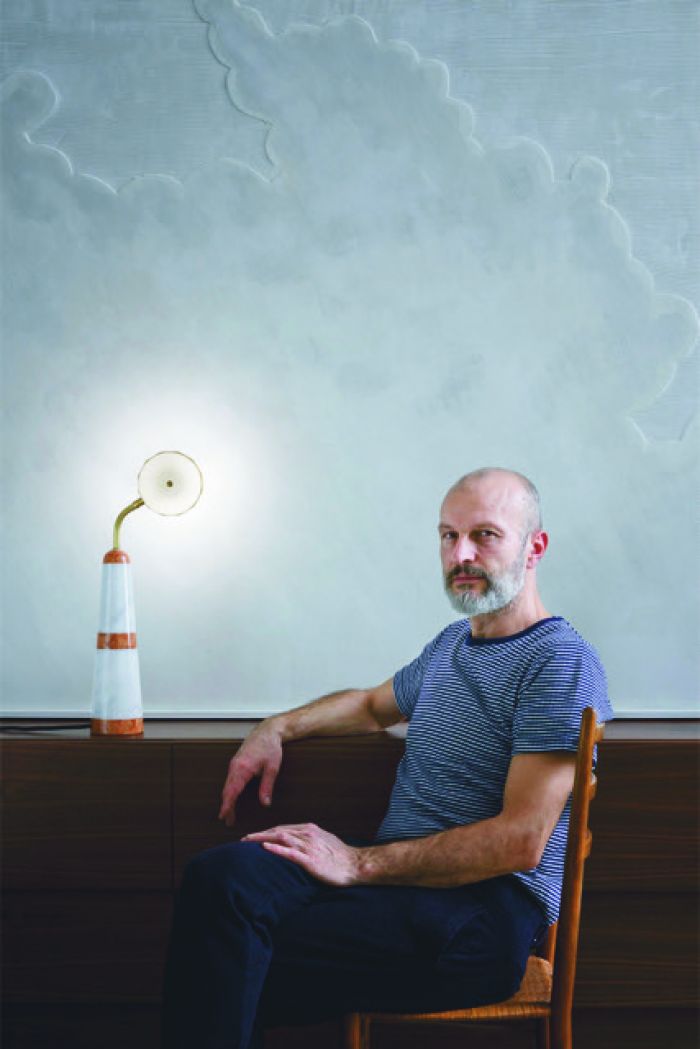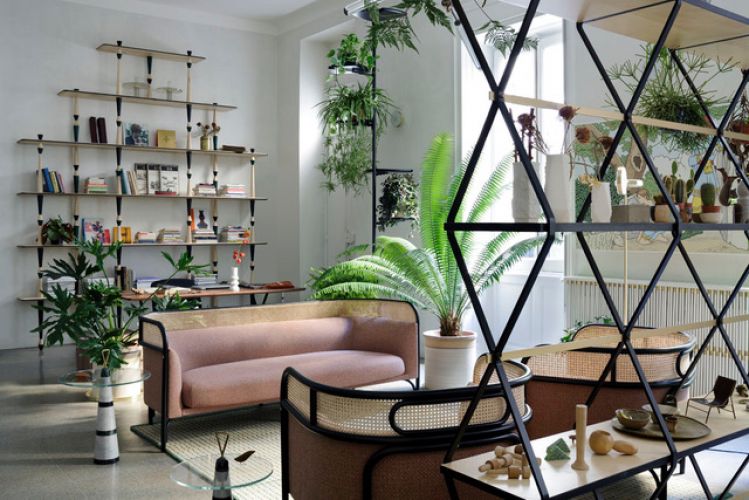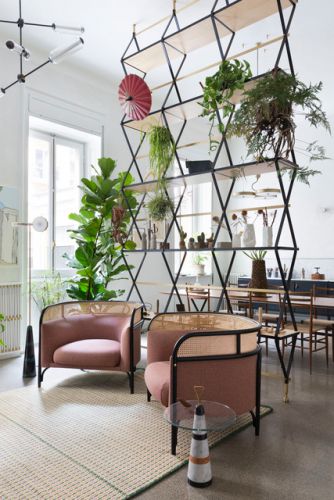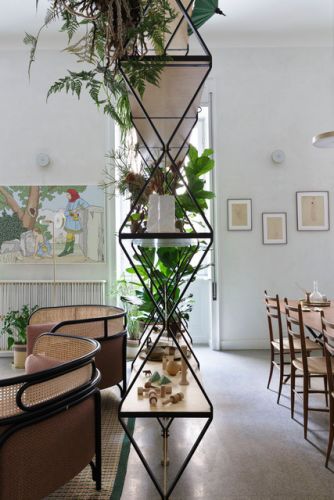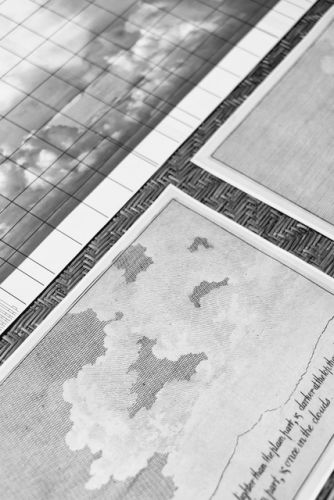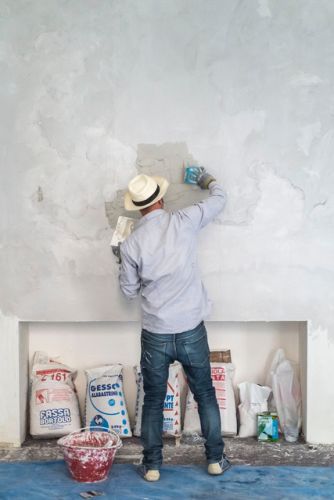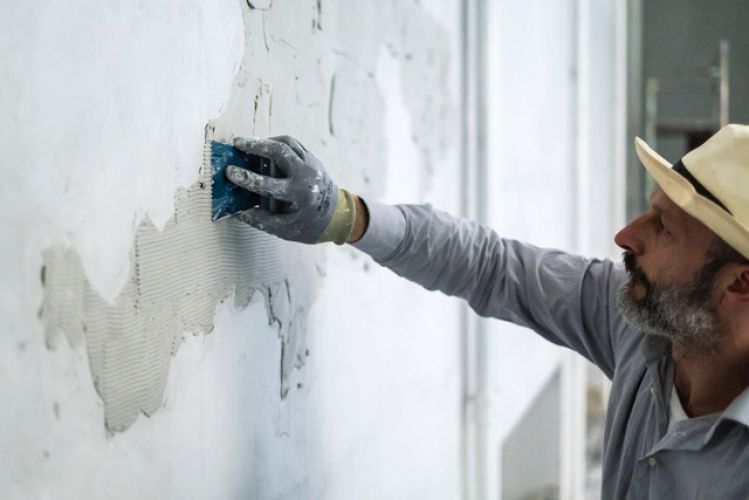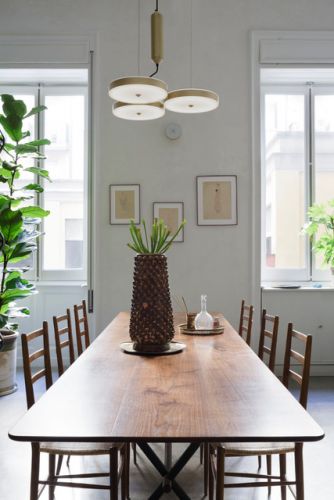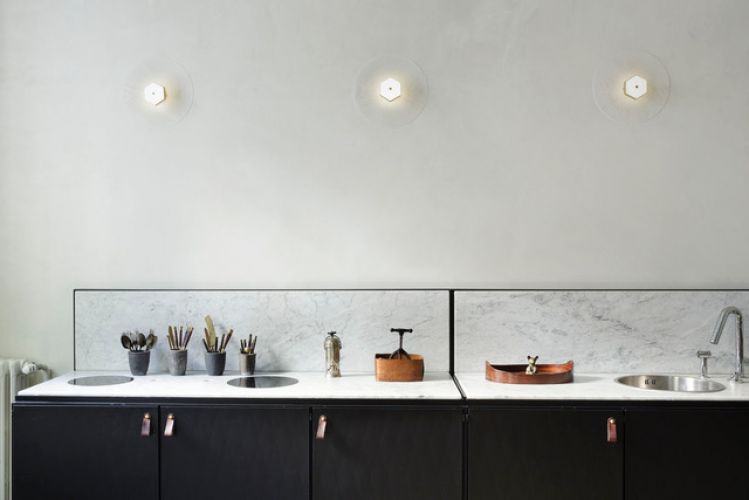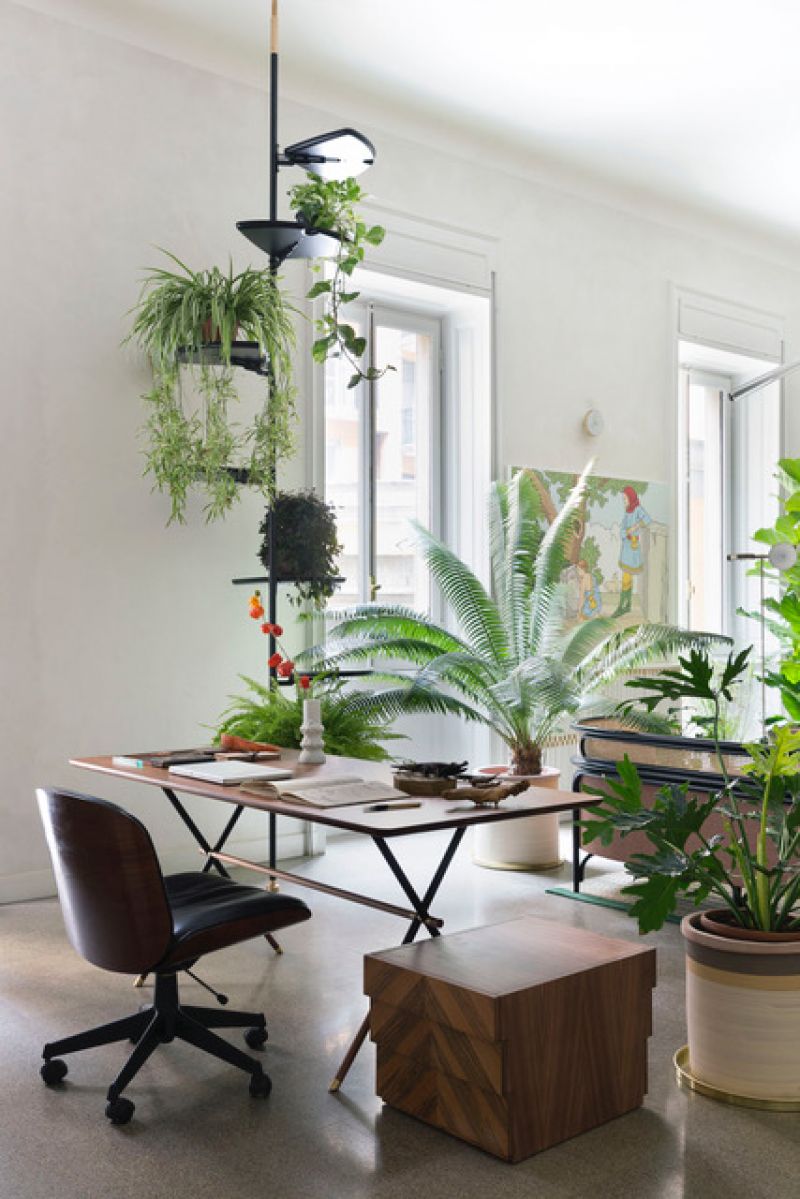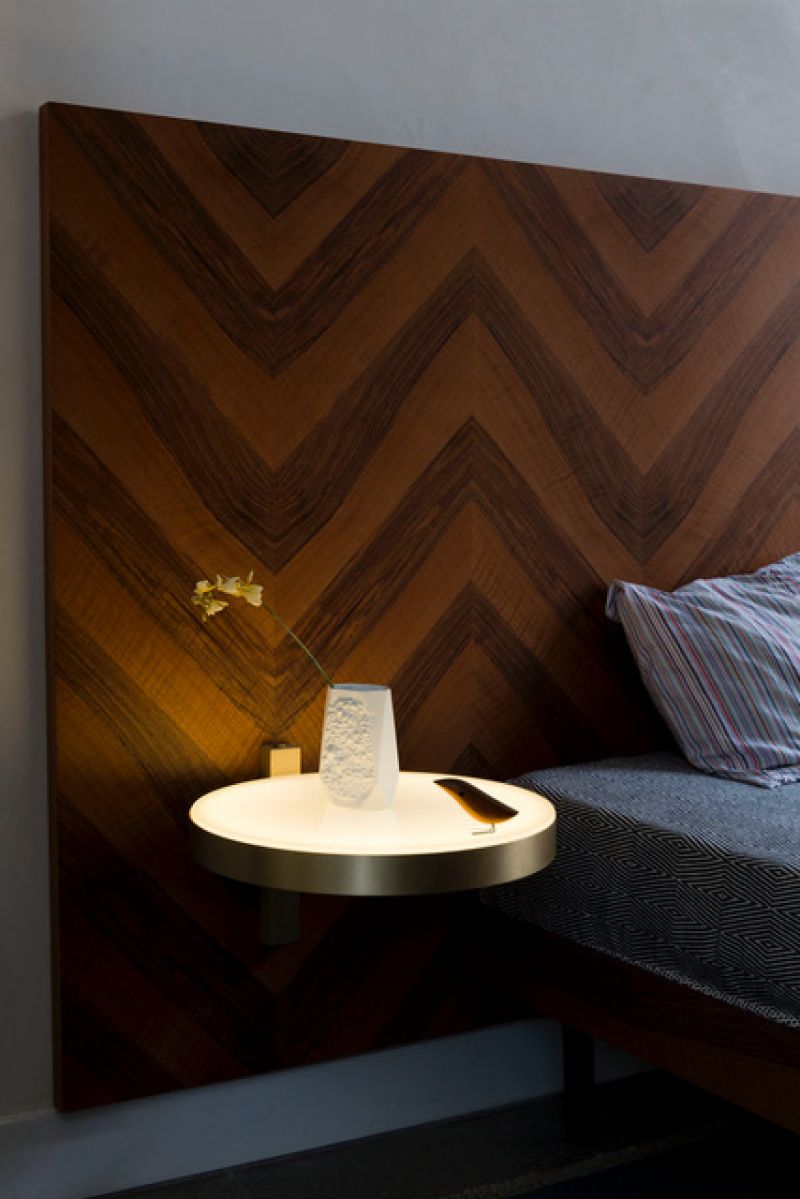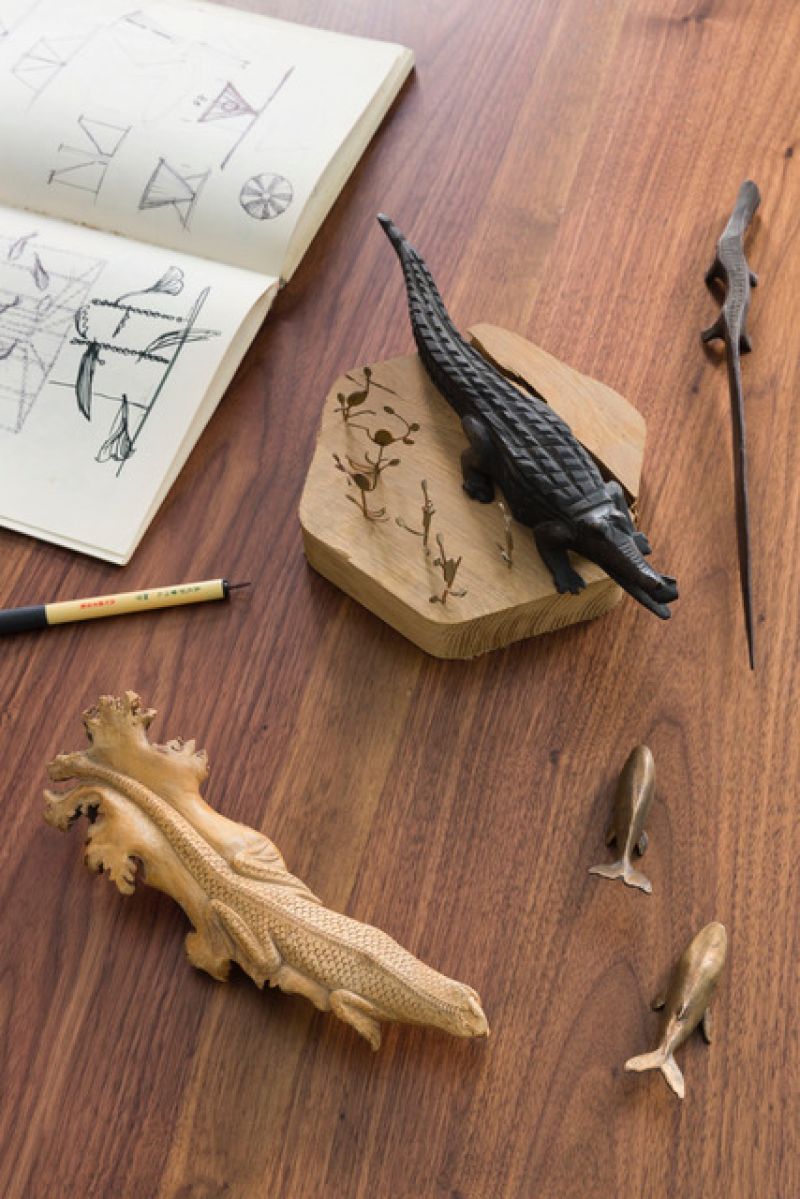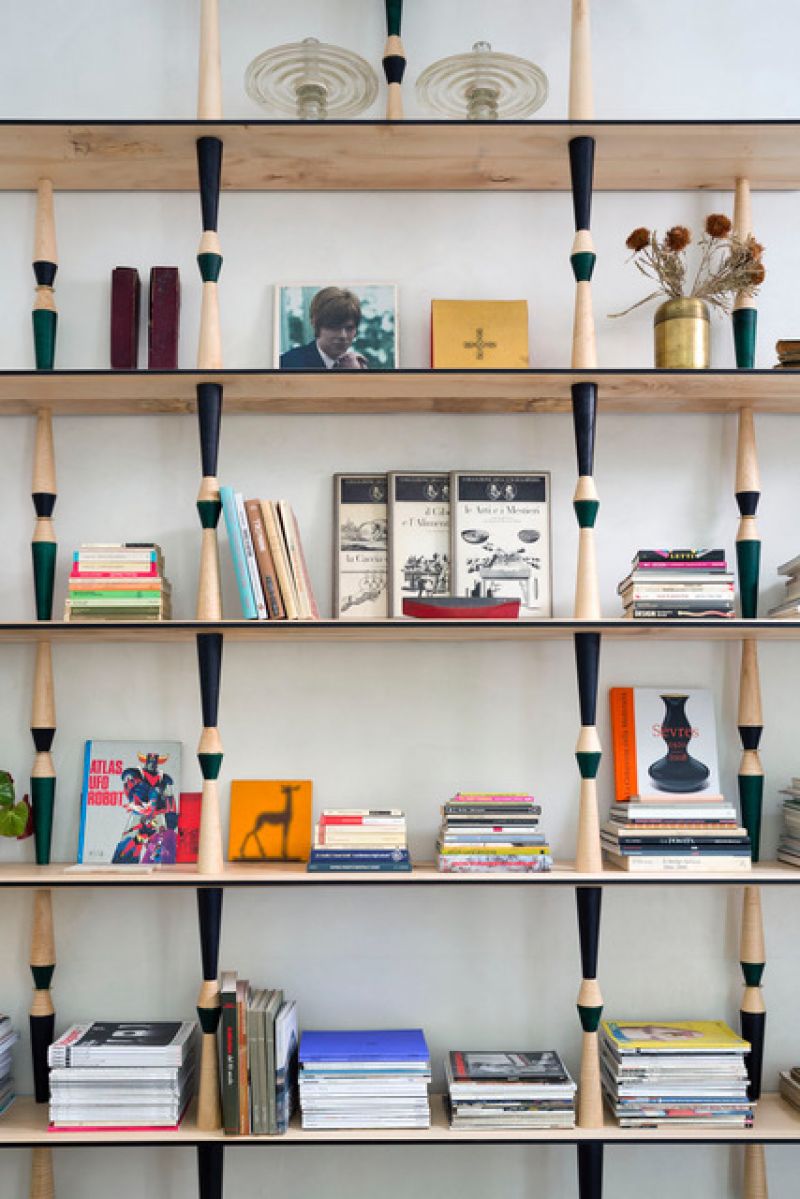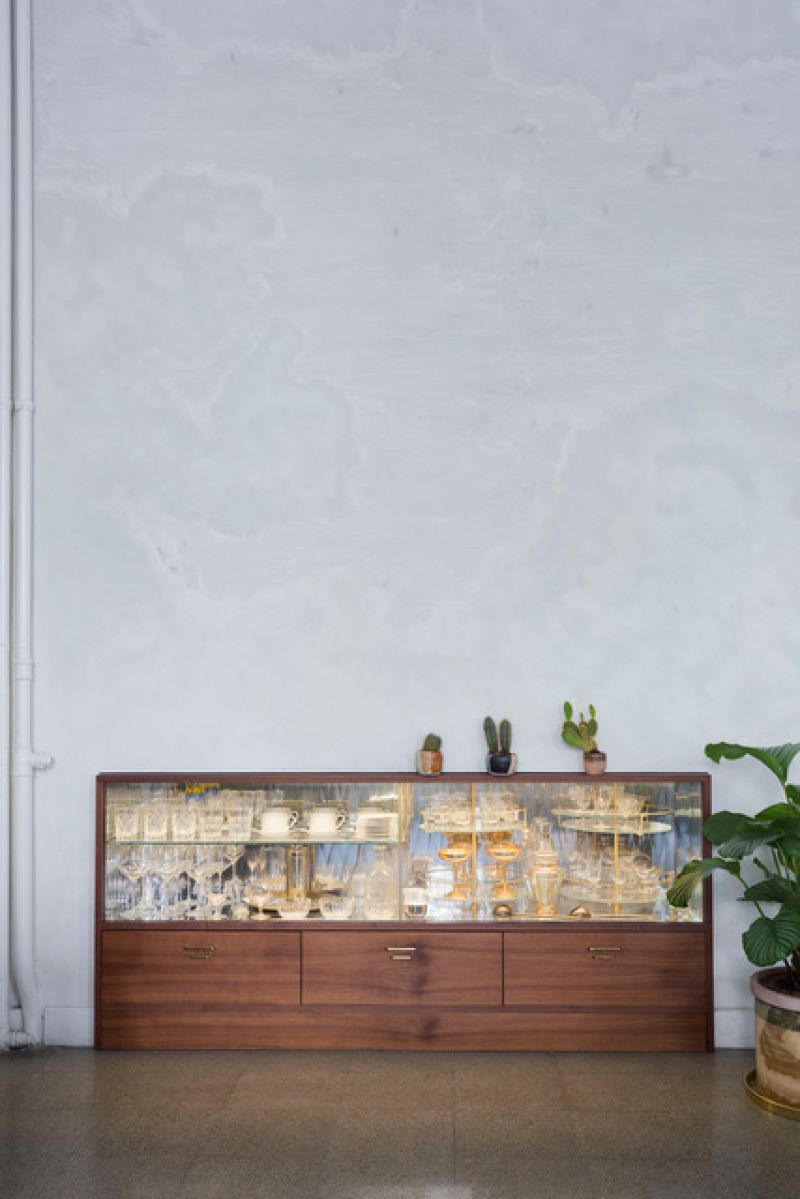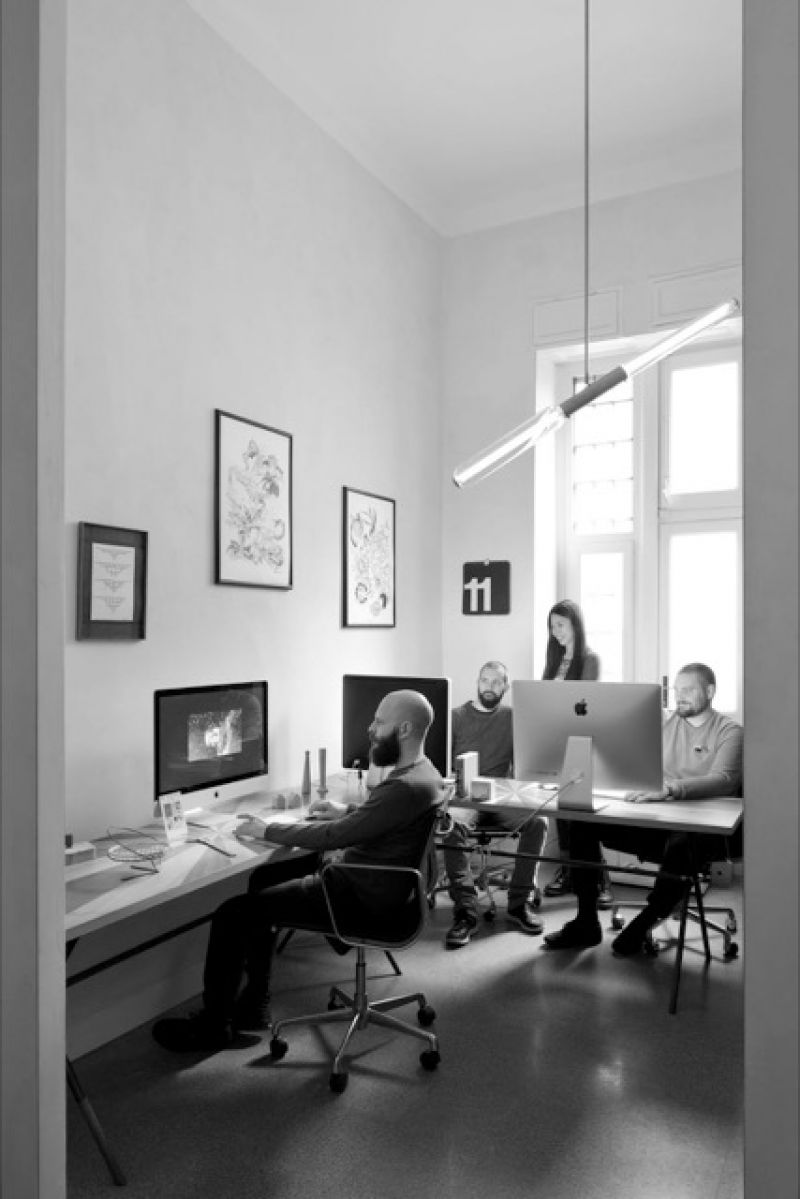The beautiful Targa Sofas were designed by Gam-fratesi for Gebrüder Thonet Vienna GmbH with soft pink Kvadrat upholstery. The rest of the furniture was designed by Russo himself: Trabea bookshelves, made of solid maple and brass. The wooden cones are dyed with aniline. The SAT coffeè table is a composition
of black Marquigna, green Guatemala, white Carrara, and red Verona marble. The top is made of extra-light glass and has a brushed brass handle.
The Romboidale divider, designed by Russo, is a beautiful and spatial gesture. The uprights of black powder-coated iron are combined with crosspieces of brushed brass and shelves finished in maple with black edges. On the floor is a carpet NET by Ilaria Innocenti. On the ceiling a Libra light sculpture, a gunmetal-coloured iron structure with borosilicate blown glass. The lazy loungers are by Gamfratesi for Gebrüder Thonet Vienna GmbH.
